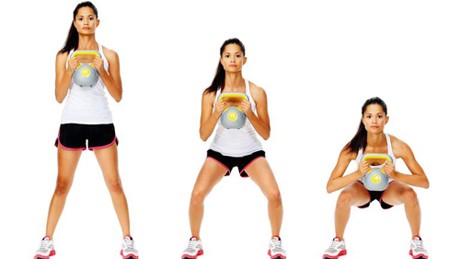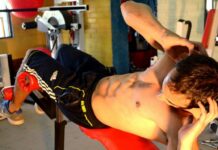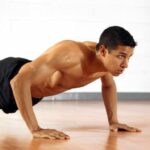Doing squats helps in many aspects, when we are doing squats we are stimulating the blood supply throughout the body, which helps to oxygenate the body and prevent cell oxidation.
Also other benefits of doing squats is that we are training the entire lower part of our body, from the buttocks, thighs, calves and even the feet.

Even depending on the type of squats you do, your arms and back could be stimulated from this exercise as well. However, it is not always known how to squat correctly.
Either because we adopt bad postures, or because we don’t know how many to do depending on our physical condition and needs. It is not the same to do squats to train the thighs, than for the buttocks or calves.
To do squat correctly we must know what kind of squats we should do and how to adapt them to our exercise routine.
We must also know how many to do, because if we overdo our exercises, we will most likely end up getting more sick than necessary or risk developing muscle atrophy.
For these kinds of reasons, we want to show you what steps and care to follow to do squats at home correctly without risking your health and obtaining the most optimal result.
What do you need to do squats?
- Toilet
- dumbbells
- dumbbells
- sportswear
- balanced diet
Squat Instructions
- Start by researching what kind of squats you need for your body. All the squat classes that exist train the legs to a greater or lesser degree, but there are special squats for each thing. If what you want is to train the buttocks, squats with kicks back or to the sides, (that is, squats where when you get up you raise your leg either to the back or to the side), are perfect to fulfill this function. But if what you really want most is to train your thighs and calves, the classic squats in which you squat and lift are indicated.
- As the first type of squat we will show you how to do the classic squat. Stand with your back straight and feet shoulder-width apart, with your hands on your waist, on your head, or holding a ball, squat down and stand up. The duration of each repetition in which you get up and go down will be about 1 or 2 seconds. You can do this exercise for 2 to 3 minutes for beginners and 4 to 6 minutes for advanced users.
- To train your calves and buttocks you can do the following exercise. Stand up straight and as if you wanted to take long steps, place one leg in front of you and bend over, try to keep your back and shoulders straight. Repetitions should be 2-3 seconds per squat and session duration should be 3-4 minutes for beginners and 4-7 minutes for advanced.
- To lose weight and strengthen the inner part of the thighs, open your legs to the sides and with your hands to the sides, as if you were a ballet dancer, crouch down. Feet always out, not too much, only as far as is comfortable, back always straight, if your arms get tired you can put them around your waist, but the exercise is more effective if you do it with your arms outstretched.
- The following squats are very similar to the classic ones; the only thing that changes is the position of the feet and the way you get up. With your feet slightly less than shoulder-width apart and straight out in front of you, squat down. You can put your hands on the back of the neck or on the waist; if you do it on the back of the neck it will be more effective. Keep your back straight and when you get up; try to get on half point. Each squat should last about 2-3 seconds each.
- Bulgarian squat. Put one of your legs back on 1 or 2 steps and the other forward, as if you were about to finish going down the stairs. After this, with a straight back, bend down. The ideal for this exercise to work is to do several repetitions on one side, and then continue with the other. Do each repetition with duration of 2-3 seconds for each one, after doing the necessary repetitions with one leg, move on to the next.
- Squats with weights. To do squats of this class you must be advanced and therefore know how to do the types of squats that we mentioned earlier. With dumbbells of 2 to 3 kilos, keeping your back straight and always without fully extending your legs, bend down and get up as if you were doing classic squats.
- With the passing of the months and the increase in your physical resistance, you will be able to do this type of squat with tube weights, but for this you must already be more advanced, otherwise you could damage the ligaments and muscles of your back, as well as injure also those of your legs, because this is not recommended if the person is very new. To start doing squats with tube weights we recommend you start by using the pure tube without additional weights. As you progress you can increase the weight on the plates.
Tips for doing squats
- All the types of squats you see here should be done with caution and always start with a low level of effort and increase as you develop strength and physical endurance, otherwise you are risking your health through physical exertion.
- Do not do squats with repetitions too fast, it is more effective if the exercise is done correctly and with an indicated time than doing several repetitions. The important thing is not the repetitions per se, but the time and the effectiveness with which you train your body.
- None of these exercises should be done on a diet low in protein, calcium, iron, or carbohydrates. All the exercises you see here should be done accompanied by a balanced and nutritious diet that complements them.
- It is also important to keep the body hydrated all the time. Exercising without drinking water can severely damage your kidneys and make you overly dehydrated.

















